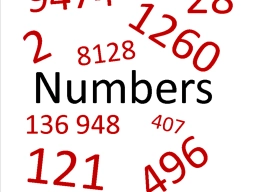Three numbers
The product of three natural numbers is 600. If we reduced one factor by 10, the product would decrease by 400. If we increased one factor by 5 instead, the product would increase to twice the original value. Which three numbers have this property?
Final Answer:

Tips for related online calculators
Are you looking for help with calculating roots of a quadratic equation?
Do you have a linear equation or system of equations and are looking for its solution? Or do you have a quadratic equation?
Do you have a linear equation or system of equations and are looking for its solution? Or do you have a quadratic equation?
You need to know the following knowledge to solve this word math problem:
algebraarithmeticbasic operations and conceptsnumbersGrade of the word problem
Related math problems and questions:
- Increased 2843
 Which number has the property that if we subtract from its five times increased by five and its three times reduced by 3, we get the original number again?
Which number has the property that if we subtract from its five times increased by five and its three times reduced by 3, we get the original number again? - Product - price
 The original price of the product was 6,300. We reduced the product price by 10 percent twice. What is its final price?
The original price of the product was 6,300. We reduced the product price by 10 percent twice. What is its final price? - Increases 80772
 The product of two numbers we know. If we increase the first factor by 2 and decrease the second factor by two, the product increases by 4. How much does the product change if we decrease the first factor by 3 and increase the second factor by 3?
The product of two numbers we know. If we increase the first factor by 2 and decrease the second factor by two, the product increases by 4. How much does the product change if we decrease the first factor by 3 and increase the second factor by 3? - Rectangle - sides 3
 If in the rectangle ABCD, we enlarge side a by 5 cm and decrease side b by 2 cm, the rectangle area will be reduced by 5 cm². When we decrease the length of side a by 4 cm, and at the same time we increase the length of side b by 3 cm, we increase the are
If in the rectangle ABCD, we enlarge side a by 5 cm and decrease side b by 2 cm, the rectangle area will be reduced by 5 cm². When we decrease the length of side a by 4 cm, and at the same time we increase the length of side b by 3 cm, we increase the are - Original 4777
 Which number has such a property that if we increase it by 7, we get a number with the same absolute value as the original number?
Which number has such a property that if we increase it by 7, we get a number with the same absolute value as the original number? - Increased 3018
 After an increase of 40%, the notebook cost 10.50 euros. How many euros would this notebook cost if it increased in price by only 30% instead of 40%?
After an increase of 40%, the notebook cost 10.50 euros. How many euros would this notebook cost if it increased in price by only 30% instead of 40%? - Three-digit - sum
 A three-digit number has a digit sum of 16. If we change the digits in the hundreds and tens places in this number, the number is reduced by 360. If we swap the ten's and one's digits in the original number, the number increases by 54. Find this three-dig
A three-digit number has a digit sum of 16. If we change the digits in the hundreds and tens places in this number, the number is reduced by 360. If we swap the ten's and one's digits in the original number, the number increases by 54. Find this three-dig
